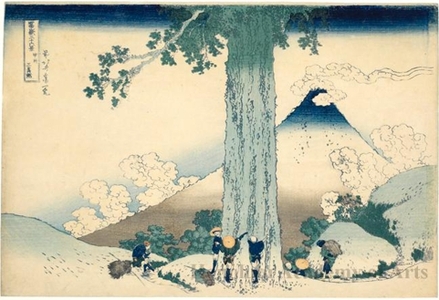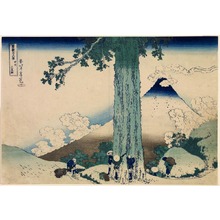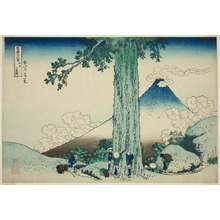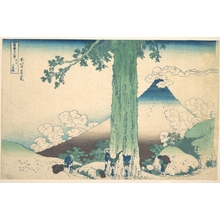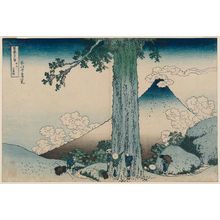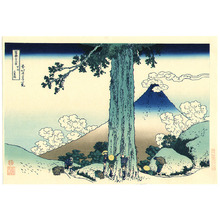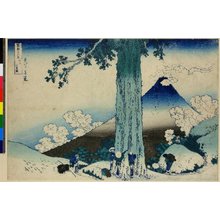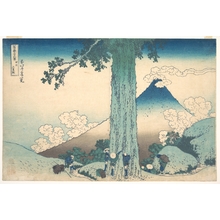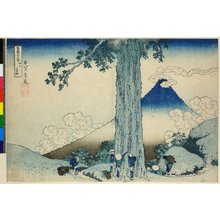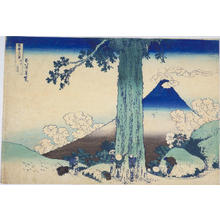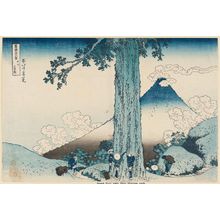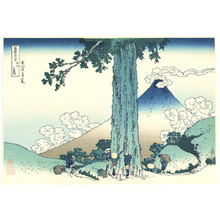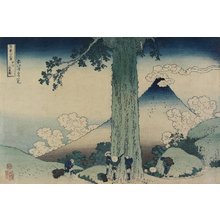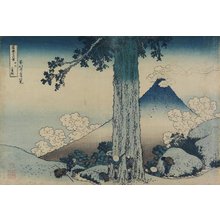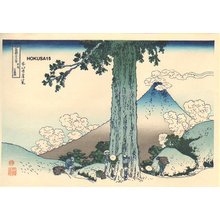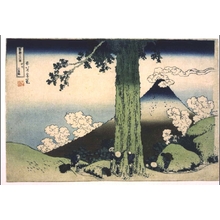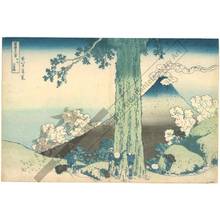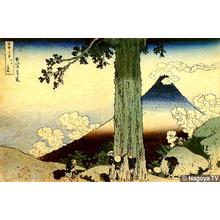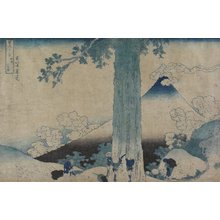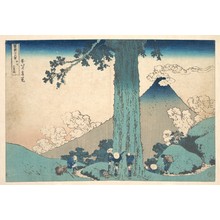Katsushika Hokusai创作的日本版画《Mishima Pass in Kai Province》
标题:Mishima Pass in Kai Province
日期:c. 1830 - 1834
详情:更多信息...
来源:Honolulu Museum of Art
浏览所有5,476幅版画...
描述:
Textiles graced with vertical stripes, made by alternating warp thread colors, were imported as trade goods beginning in the fifteenth century. Particularly influential for commoners' clothing were vertically striped cotton tozan fabrics made in India and brought to Japan by Dutch trade ships during the early Edo period. The wealthy elite monopolized the first of these exotic textiles, with their delicate, narrow vertical stripes, but as soon as the production of fabrics imitating tozan stripes began in central Japan, demand for them quickly spread among commoners. During the late Edo period, cotton fabrics woven in patterns of narrow vertical stripes were all the rage: townsmen and women sported chic striped kimonos for outings, while villagers worked in humble striped garments dyed in dark colors. In this dramatic scene, a detail shows three travelers with their arms stretched out as if to measure the circumference of a gigantic tree. All wear kimonos woven in striped patterns. Two travelers sport vertically striped cotton outfits, and the third, at the right, wears a kimono with a subtle checkerboard pattern. They are dyed in several shades of indigo, exemplifying the typical subtle beauty of everyday striped cotton costumes. (from “Blue and White” textiles exhibition 8/28/2008-) - - - - - - - - - - The print is one of Hokusai’s most interesting and humorous compositions in the Fuji series. Fuji, wrapped by a curling cloud at its summit, is seen across the hilly Mishima Pass, colored in light green. The mountain is split into three color bands, blue, white, and charcoal black. Its flanks on both sides are adorned with curling clouds. In the center foreground, a gigantic tree, with lower limbs hanging down, towers to the sky, its upper reaches cut off by the edge of the paper. Three men, perhaps in a relaxed mood after having crossed this difficult pass, try to measure the circumference of this impressive tree by joining their hands and encircling the trunk. A seated man, who does not wish to join them, is enjoying a puff of tobacco. Again, Hokusai’s geometric compositional scheme is notable. Fuji’s left slope is repeated by two diagonal lines: a tree branch hanging down from the edge of the paper, and the hills at the right. The exact location of Mishima Pass is uncertain. It is speculated that it may be Kagosaka Pass, or this print may be one of Hokusai’s fictitious views of Fuji (Kondö 1966, no. 29). The key-block was printed in blue. (The Asian Art Museum of San Francisco, HOKUSAI AND HIROSHIGE – Great Japanese Prints from the James A. Michener Collection, Honolulu Academy of Arts: The Asian Art Museum of San Francisco, 1998 Page 70. Cat. 21)
